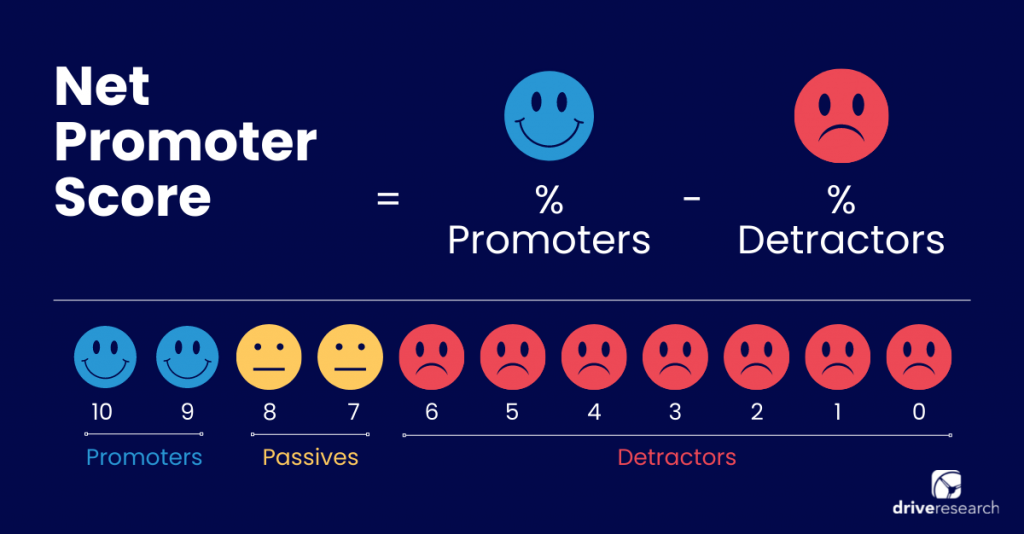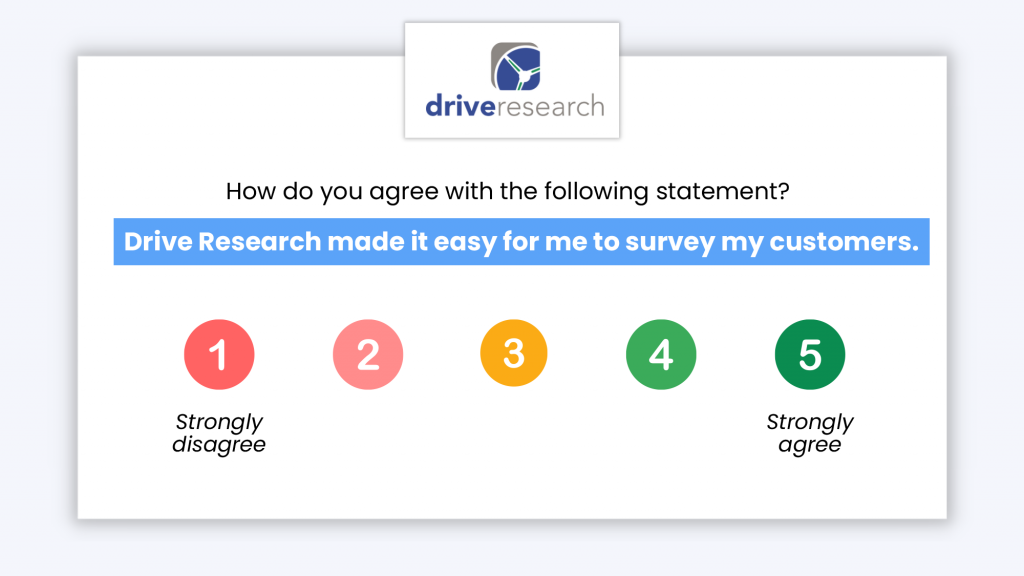
Customer experience is everything when it comes to an effective business strategy.
This is no exaggeration, as 80% of consumers believe a good experience matters just as much as a company’s services.
So how can businesses prioritize this key area? Market research can certainly help! There are many ways customer surveys can reveal the satisfaction of shoppers.
When learning how to measure customer experience, many important metrics are covered that each reveal specific data points. Let’s dive in!
What Exactly Is Customer Experience?
Measuring customer experience refers to the overall way shoppers perceive and interact with a business.
This includes all areas of the customer journey, from the shopper’s first discovery of a brand to their final purchase and even after that.
A good customer experience factors in many different aspects:
- Customer service efforts
- Good user experience
- Purchasing experience (online or in-person)
- Marketing strategies
- Product/service use
An effective customer experience strategy will always focus on the shopper outside of the products and services provided.
The Best 10 Metrics To Measure Customer Experience With
Now that we’ve covered why customer experience is important, we’ll review how it can be properly measured.
Below, we’ve included the top 10 metrics that can help businesses better understand their customer’s experiences.
1. Net Promoter Score (NPS)
A brand’s net promoter score refers to how likely a client is to recommend their services to someone else.
Measured on a Likert scale, customers will rate their likelihood from 0 to 10.
As you can guess, 0 means they’re not likely to recommend the brand, while 10 means they are. But more goes into NPS than just that!
Responses will be broken down into three groups:
- Promoters
- Passives
- Detractors
Promoters are those with a high NPS score from 9 to 10 who are big fans of a brand and will recommend its services to others.
Passives are those that rate 7 or 8 on the Likert scale. They like the brand in question, but something is holding them back from becoming promoters.
Detractors rate 6 and below are not likely to recommend your brand, for one reason or another. This group is especially important to keep an eye on, to see how they could eventually become passives and even promoters.

2. Customer Satisfaction (CSAT) Score
Improving customer satisfaction doesn’t have to be that difficult, especially when using a third party for customer surveys.
Covering CSAT in a survey will easily indicate how pleased your customers are. Usually, this question is asked on a scale of 1 to 5 or 1 to 10. The scale ranges from unsatisfied to satisfied at the higher end.
Customer satisfaction surveys conducted at the point of interaction provide reliable data since the answers are genuine and the response rates are good.
CSAT surveys, when conducted at the point of interaction, offer businesses actionable data. This is due to authentic customer responses since the purchase is still fresh in their minds.
3. Customer Effort Score (CES)
Growing in popularity within market research, CES measures the difficulty of brand interactions.
And as customers, we’ve all experienced a brand that’s hard to deal with for one reason or another.
For example, a CES question typically asked in a customer survey can look like this…
On a scale of 1 to 5, how easy was it to solve your problem with our business today?
Customers can then choose their rating, which ranges from ‘very easy’ to ‘very difficult.’
In this case, a low score is a sign things are going well and indicates the customer had an easy time interacting with a brand.
CES questions are ideal for boosting communication between customers and a business, and can also reduce customer churn rates.

4. Customer Communication Response Time
This metric is key for brands who want to see high customer satisfaction rates.
It’s no surprise that customers love fast responses.
Quick responses to customer queries demonstrate:
- Attentiveness
- Reliability
- Respect for customer time
- Dedication to building customer relationships
On the opposite end of the spectrum, delayed response times lead to frustration in customers and can turn them off a brand.
Not only does fast response time signify a brand’s commitment to the customer experience, but it also helps business operations. When queries are dealt with efficiently, businesses also help streamline the overall purchasing and customer outreach process.
This dedication to answering questions swiftly and thoughtfully contributes to high levels of customer loyalty.
5. Customer Issue Resolution Time
Similar to our last metric is customer issue resolution time.
This metric deals specifically with customer issues and complaints versus standard queries. As we discussed, long wait times for issues to be resolved can create customer frustration.
Not only will fast resolution help strengthen customer bonds, but it will also work to address any existing issues within the brand.
Additionally, this can also link back to customer effort. Reducing issues reported by customers will naturally cut down on the amount of effort they have to put into a difficult process.
6. Brand Reputation
Since a brand’s position and reputation in the market has a lot to do with customer interactions, measuring it is key to its success.
A brand’s reputation matters so much because it encompasses customer perceptions, experiences, and sentiments. Of course, all of this ties back to a brand’s identity.
A brand with a positive reputation can expect to have happy, loyal customers returning time and time again. However, a brand with a poor reputation will not have these benefits and may even fail as a result.
Keeping an eye on brand reputation will allow companies to continuously measure public sentiment while also improving pain points.
Again, good brand reputation and perception lead to a whole host of benefits:
- Customer retention
- Advocacy
- Organic growth
- Competitive edge
7. Customer Engagement
Customer engagement directly informs brands of their relationship with shoppers.
When engagement levels are higher, that means customers are actively interacting with your brand and likely have a positive emotional connection with it.
What’s more, customers who are engaged are more likely to become repeat shoppers with a brand–generating more business and positive buzz.
When brands measure customer engagement levels, they can also create a more targeted approach based on that customer data. This means tailoring outreach strategies to match the needs of certain demographics and so on.
8. Employee Engagement
The engagement level of employees directly affects customer engagement levels.
Chances are, you’ve dealt with disengaged, cranky employees before. Did that experience make you want to return to that business? Probably not!
A critical metric, employee engagement helps businesses keep an eye on how staff interactions.
Running employee surveys is a great way to measure their engagement and also address pain points. When employees feel seen and respected, they will naturally want to perform better at their work–and that will be seen by customers.
This is why it’s not only vital to continuously gather employee data, but it’s also key to actually use the data. Doing so will result in a happier workplace, with happier customers!
9. Customer Retention
As we touched on earlier, customer retention is key to a functioning business and is directly related to satisfaction levels.
Retaining customers is far more cost-effective than constantly trying to reel in new ones. Think of all the marketing strategies and campaigns businesses would have to create to consistently bring in new shoppers.
This is not only costly but takes time, too.
Retaining customers directly relates to their experiences with your company. In fact, a majority of consumers are more likely to make a repeat purchase after a positive customer experience.
While it’s always important to want to bring in new customers, it’s just as important to spend time retaining current ones. This can be done with internal measures like more personalized content, rewards programs, and so on.
Measuring customer retention will also tell brands what they’re doing right and what can be improved. Acting on this feedback will ensure current shoppers become long-term customers.
10. Customer Lifetime Value (CLV)
Customer lifetime value is the total revenue a customer will generate for a business, from the beginning of that relationship to the end.
Essentially, LTV refers to the amount of money a customer will generate for a brand from their first purchase to their final one. Including this metric allows brands to successfully budget for retaining customers and bringing in new ones.
Calculating LTV also helps brands understand which customers are a higher priority. AKA–which shoppers are more beneficial to their brand.
Lastly, LTV gives brands an idea of which items are well-received by customers. This allows companies to stop spending money on what services aren’t preferred, allocating more towards popular services.
How To Decide Which Metrics Are The Most Important
Choosing which customer experience metrics to include in your survey really depends on the unique goals of a business.
To start, brands can spend time identifying key aspects of the customer journey. This will allow them to understand what areas are critical to understanding overall satisfaction levels.
From there, brands can begin to craft a plan to include specific metrics in the research. This is why it’s helpful to partner with a third-party firm like Drive Research. Doing this takes the guesswork out of the project.
Additionally, a third-party team will help you choose which customer satisfaction metrics to include in your research.
How to Measure These KPIs and Metrics
A combination of qualitative and quantitative methodologies can be used to measure CX KPIs.
In this case, it’s likely surveys will be the key method used or some other related feedback form.
That said, other ways to obtain this information can be done through research such as focus groups and customer interviews.
No matter how this data is collected, it’s essential that these are tracked on a semi-regular basis. Doing so will allow brands to keep an eye on changes and popular trends within their industry.
FAQ About Measuring Customer Experience
Below are some common questions about measuring the customer experience.
What is the best way to measure customer experience?
The best way to measure customer experience is through a series of questions in a customer survey.
This survey will measure satisfaction levels and often includes key metrics like NPS, CES, LTV, and other identifiers we mentioned earlier in the post.
What is the scale for measuring customer experience?
Customer experience is often measured with a scaling system. This includes scaling metrics like NPS, CSAT, and CES. The scaling numbers vary but allow brands to easily see where they’re failing and how they can improve.
What are customer experience metrics?
Customer experience metrics involve quantitative and qualitative research tools to gather key data around shopper interactions. Metrics such as customer feedback, response time, and sentiment analysis offer detailed insights into their shopping experience. By identifying these, brands can then begin to strengthen their overall strategy.
Contact Our Customer Experience Company
Maintaining a positive customer experience is a key part of a thriving business, and plays a large role in high satisfaction levels.
Drive Research is a national market research company. Our team is well-versed in customer satisfaction and experience research, and will work with your brand to provide relevant, quality data.
Want to learn more about our market research services? Get in touch with us today.



